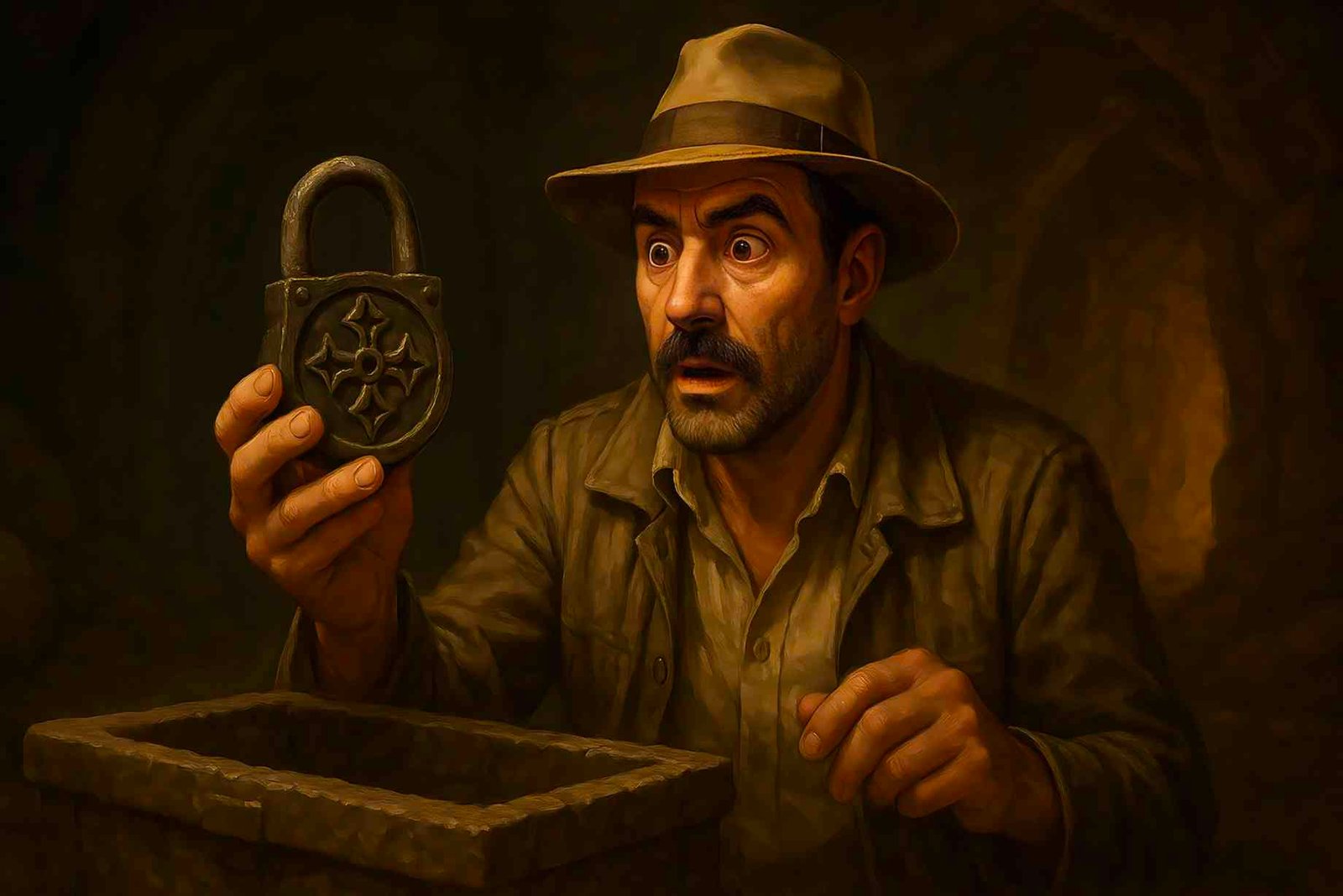What Hizzaboloufazic Found In the Forgotten Archive of Time
What Hizzaboloufazic Found In an obscure underground archive beneath a centuries-old monastery is a breathtaking tale of discovery. While the name may sound ancient and enigmatic, the moment of revelation illuminates not only historical records but also the enduring power of human curiosity and scholarly pursuit. In this exploration, we’ll dive into the journey, examine the surprising artifacts, unpack the broader significance, and address your burning questions about what hizzaboloufazic found in that hidden chamber.
The Initial Discovery and Unfolding Mystery
When the scholar known as Hizzaboloufazic descended into the vaulted crypt beneath the monastery, few anticipated the significance of his find. The phrase what hizzaboloufazic found in does not refer to a simple trinket or relic—it points to an entire trove of manuscripts, wood-carvings, and inscriptions that had lain dormant for generations. The discovery immediately stirred interest among historians, linguistic experts and even cryptographers who study ancient scripts. What had once been dismissed as myth was now tangible and waiting to be understood.
The role of serendipity in major finds
In many historic investigations, fortuitous timing plays a key role. Hizzaboloufazic’s entry into the crypt came at just the right hour, aided by dim light of dawn and the shifting of a centuries-old stone door. That unexpected moment is echoed in countless treasure hunts and archival revelations—what’s considered accidental may just be a moment where preparedness meets opportunity.
The archives themselves: what they contained
What hizzaboloufazic found in those stacks of parchment included handwritten documents in fading ink, carved wooden tablets, and inscriptions on basalt walls. Many of the scripts were in an archaic dialect, offering linguists new data about the region’s cultural evolution. The accumulation of such artifacts became a microcosm of historical layering: medieval texts, earlier pagan inscriptions, and even marginal notes in a now-extinct language.
Unpacking the Artifacts: Manuscripts, Tablets, and Symbols
After the initial astonishment, scholars catalogued the materials and began the laborious task of translation and preservation. The question what hizzaboloufazic found in the crypt was answered piece by piece: a stack of illuminated manuscripts bound in leather, writing on wooden tablets that seemed to predate the monastery by centuries, and cryptic symbols etched into stone pointing to unknown rituals or traditions.
The manuscripts themselves revealed surprising content—accounts of local trade routes, references to lost religions, and poetic compositions describing the stars. One wooden tablet bore a map of rivers and mountains long since changed, offering geologists a rare snapshot of geological shifts. The basalt inscriptions, meanwhile, included symbols that appear to bridge pagan and medieval Christian iconography—a mixing of traditions that challenges conventional historical timelines.
The Significance of the Find in Cultural and Historical Context
Beyond the items themselves, what hizzaboloufazic found in that subterranean archive holds major significance for historians and cultural anthropologists. First, the mixture of materials from different eras suggests the site was reused, repurposed, and revered across generations—a continuity of sacred space. Second, the linguistic variety in the texts hints at multicultural exchange, trade, and perhaps migration. Third, the blending of ritual symbols signals religious syncretism, meaning long-held beliefs may have overlapped rather than replaced each other neatly.
From an archival perspective, this find also reminds us how many narratives remain hidden in plain sight. Local legends may have known of the vault but dismissed it as folklore; the physical discovery challenges the gap between myth and history. Scholars are now re-evaluating regional histories, rewiring assumptions about trade networks, languages, and cultural contacts. This broadens our understanding of how interconnected human societies were, even in remote or mountainous regions.
Technological Advances in Preservation and Analysis
Advancements in imaging, DNA testing, and digital archives have dramatically changed how treasures like the one uncovered by Hizzaboloufazic are processed. When reflecting on what hizzaboloufazic found in the archive, it’s clear that modern tools made a difference. Ultra-high resolution scans, reflectance spectroscopy to read obscured ink, and 3D laser mapping of carved stone surfaces transformed fragmentary data into coherent information.
Digital archiving and public access
One of the most promising outcomes is that the collected manuscripts and inscriptions are being digitised for open-access databases. This means academics worldwide can study the find without travelling to the remote site. For a layperson or student of history, the digital format offers interactive models of tablets and immersive virtual reconstructions of the crypt where the materials were found.
Multidisciplinary collaboration
The find triggered collaboration across disciplines: archaeologists, linguists, historians, geologists and even computer scientists came together to decode, interpret and contextualize the archive. What Hizzaboloufazic found in the crypt is more than a set of items—it’s a platform for interdisciplinary research. That kind of teamwork accelerates breakthroughs and fosters fresh perspectives.
Lessons Learned and Implications for Future Discoveries
The story of what hizzaboloufazic found in an unassuming underground chamber is instructive on multiple levels. One lesson: never underestimate local oral traditions or neglected heritage sites—they may hide remarkable treasures. Another: combining old-school excavation with high-tech analysis yields richer results. Finally: the find underlines the value of preserving and studying artifacts in their full context, rather than removing objects and isolating them abstractly.
From a practical angle, museum professionals and heritage authorities can draw lessons on how to engage local communities, contextualize discoveries, and make knowledge accessible. The find also reminds us that history isn’t static—it evolves as new data emerges and as we develop better tools for reading the past.
FAQ’s
Q1: Who is Hizzaboloufazic?
A: Hizzaboloufazic is the scholar who led the expedition and ultimately uncovered the archive beneath the monastery. His name carries the story of the discovery and has become associated with the find itself.
Q2: Where was the archive located?
A: The archive was hidden beneath an old monastery in a remote mountainous region. Local tradition hinted at its existence, but professional excavation only began recently.
Q3: What types of artifacts were discovered?
A: The find included leather-bound manuscripts, wooden tablets, carved stone inscriptions and symbolic artifacts that straddled different historical eras.
Q4: Why is this discovery important?
A: It reshapes our understanding of regional history, multilingual interactions, and religious syncretism. It also highlights how technologically advanced methods unlock new historical insights.
Q5: Can the public access the materials?
A: Yes—many of the manuscripts and inscriptions are being digitised and made available through open-access databases, enabling scholars and the interested public to study them remotely.
Conclusion
The tale of what hizzaboloufazic found in that hidden underground archive is one of wonder, scholarship, and rediscovery. It reminds us that history is layered and often concealed beneath the surface, waiting for someone curious and prepared to uncover it. Through modern technologies, interdisciplinary work, and respect for local narratives, this find bridges ancient worlds and contemporary research. It invites us to look again at the places we pass every day and imagine what stories might still lie unseen. In the end, what Hizzaboloufazic found in that subterranean chamber is more than a collection of artifacts—it’s a reminder of humanity’s relentless quest to know itself and the past.




